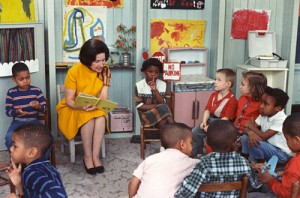A vision is a picture of the future of how the purpose or mission of the church is lived out in a particular community. It is grounded in deep insight into people, the church, and God’s Word.
There is a difference between a vision and goals and objectives. Goals and objectives are cold, abstract things that do not warm the heart. Vision, however, is warm and has the potential to melt and motivate the heart. People are able to see how they play apart in the vision.
There is a difference between mission and vision. A mission is what all churches or organizations are supposed to be doing, whereas a vision is a snapshot or picture of a specific church’s future. The mission comes from the head, the vision comes form the heart. A vision must be God’s vision and it is gleaned from Scripture.
So for our purposes, let’s define vision as “a clear mental image of a preferable future imparted by God to His chosen servants and is based upon an accurate understanding of God, self and circumstances.â€
II.        How Vision Affects the Leader and the Church
David Goetz writes, “In Leadership’s study, pastors indicated that conflicting visions for the church was their greatest source of tension and the top reason they were terminated or forced to resign.†If there are competing visions for where the church or organization “should†be headed, there will inevitably be conflict. Again, vision involves the heart, and people are personally invested in the church.
A.           Vision Encourages Unity
When a ministry has a shared vision it changes how people relate to each other. The language that people use goes from being “their†church to “our†church. It acts as a signal of where the ministry is going. It effectively says that if you want to go where we are going then “get on board.â€
1 Corinthians 12:20-22 “As it is, there are many parts, but one body. The eye cannot say to the hand, “I don’t need you!†And the head cannot say to the feet, “I don’t need you!†On the contrary, those parts of the body that seem to be weaker are indispensable,. . .â€
Ephesians 4:15-16 “Instead speaking the truth in love, we will in all things grow up into him who is the Head, that is Christ. From him the whole body, joined and held together by every supporting ligament, grows and builds itself up in love, as each part does its work.â€
Another form of unity that vision fosters is recruitment and retention in various ministries. A ministry can present its’ clear vision and direction to potential volunteers and the people can then make up in their own minds if this vision matches their own understanding, gifts, and talents.
Also if a vision is shared with new people or guests of a church they can determine if this is something they would like to be apart of or not and make an informed decision.
In a ministry it is best if you have a wide variety of personalities and gifting that may be different for the leader. In order for the ministry to be efficient and effective with all of these differences among individuals, all must hold a common vision. Each person can appreciate and value the differences in others while working together toward the vision.
B.           Vision Encourages Forward Movement
Vision gets people moving. Many times people get caught up in the business of their daily lives. The mundane becomes the priority. Nehemiah 1:3 “They said to me, “Those who survived the exile and are back in the providence and are in great trouble and disgrace. The wall of Jerusalem is broken down, and its gates have been burned with fire.†God gave Nehemiah a vision of rebuilding the walls and it drove him to action. Vision, that is felt by the heart, drives people to take action which moves the church forward.
C.           Vision Gives Purpose to Ministry
People begin to understand that they are apart of something great that God is doing through their church and through them. They begin to see their ministry as important and as having an impact on the community and even the world. It is the difference between the response of a person when asked “What do you do?†and they respond “I am just a teacher,†with “What do you do?†and they respond “I am changing the life course of children who will accomplish great things for Christ.â€
D.           Vision Fosters Risk Taking
When the pastor casts a vision everyone knows what needs to be done. Ministry then becomes an adventure because often times we know what needs to be done but we are not sure how it will be done. Different methods are tried out and experimented with, people are encouraged to step out of their comfort zones to accomplish things greater than themselves or things that they never thought possible before.
Sometimes these things work and sometimes they don’t but the vision drives ministries toward the common goal. People take risks in groups because the vision is worth the risk, and must be accomplished.
E.           Vision Encourages People to Follow
The leader, by casting a vision, is giving the people a glimpse into the future and how their lives can be changed and how others lives will changed by their being apart of this vision. People want to follow people who know the way, and they want their lives to be of significance. They want to follow people who can see where they are going.
Kouzes and Posner explain this as a driver driving in a fog bank. When we drive into fog we slow down because we can’t see where we are going. A vision then allows people to see what is up ahead, or down the road. The vision enables the organization to navigate through very treacherous terrain.
Everyone sees the mist but the leader can see the turns in the road and the town that is ahead. In Nehemiah 2:5 King Artaxerxes heard Nehemiah’s vision and wanted to help him rebuild the walls by providing the various needs of the project. The lost world will even listen to a godly leader who shows vision.
F.           Vision Improves Ministry Performance
As the leader paints a picture of the future, people begin to see themselves in the portrait. In order for the vision to be accomplished or lived out people have to evaluate where they are now as far as ministry accomplishments, quality, and effectiveness. The person also has to plan what the next step might be for the ministry to step into this vision. Vision encourages people to evaluate their ministry and to seek improvement.
Whatever an organization does must constantly be evaluated through the lens of its vision. They have to ask themselves “Why are we doing, what we are doing?â€Â Vision answers this question.
*this is part one of a three part series.
Click here to read part two.
Click here to read part three.



